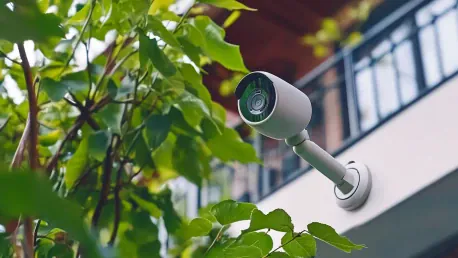In an age where convenience reigns supreme, smart homes have become a popular choice for many. However, with this growing trend comes the responsibility of ensuring the security of connected devices. The recent data breach at Mars Hydro, a Chinese manufacturer of Internet of Things (IoT) devices, has brought to light significant vulnerabilities that smart home users need to address. This breach, which left 2.7 billion records exposed, serves as a stark reminder of the potential risks associated with smart homes. Understanding and implementing robust security measures is crucial to safeguarding your personal and network information from cyber threats.
1. Update Your Wi-Fi Password
Since Wi-Fi network names and passwords were stored in plain text within the exposed database, the first step to securing your smart home is to change your router password immediately. Even if you think your credentials were not directly exposed, it’s best to assume otherwise. A strong password should be complex, combining upper and lowercase letters, numbers, and special characters. Avoid using simple or easily guessable passwords, such as your name, address, or basic numerical sequences. Regularly updating your Wi-Fi password not only protects against potential breaches but also ensures a more secure home network.
Hackers often exploit weak passwords to gain unauthorized access to networks and devices. By maintaining a strong, unique Wi-Fi password, you drastically reduce the chances of your network being compromised. Additionally, consider changing your password every few months to further enhance your network’s security. This simple yet effective measure can go a long way in protecting your valuable data and preventing unauthorized access.
2. Activate Two-Factor Authentication (2FA)
If your router supports two-factor authentication, enabling it adds an extra layer of security. This ensures that even if someone gains access to your login credentials, they would still need a secondary authentication code—typically sent via text message or an authentication app—to log in. This significantly reduces the risk of unauthorized access. Two-factor authentication acts as a deterrent to cybercriminals, making it much harder for them to breach your network.
In addition to routers, many smart home devices and services now offer two-factor authentication. By activating this feature, you not only protect your network but also secure various connected devices. It’s a small step that can have a huge impact on the overall security of your smart home ecosystem. Remember that any additional layers of protection you can implement will exponentially increase your security posture.
3. Watch Your Network for Unusual Activity
With Wi-Fi credentials and IP addresses exposed, attackers could attempt to access your network remotely. Regularly checking your router’s admin panel to review connected devices is an important security measure. If you notice an unfamiliar device, remove it immediately and change your Wi-Fi password again. Keeping a vigilant eye on your network activity allows you to quickly identify and mitigate potential threats before they can cause significant damage.
Network monitoring tools and services can provide real-time insights into your network’s activity, helping you detect anomalies and unauthorized access attempts. These tools can be valuable in maintaining a secure smart home environment, especially if you have multiple connected devices. Being proactive in monitoring your network is essential in today’s cyber threat landscape, where attacks are becoming increasingly sophisticated and frequent.
4. Keep Your Devices Up-to-Date
IoT devices are notorious for running outdated or unsupported software, making them vulnerable to cyberattacks. Regularly updating the firmware and software of your smart devices ensures that you receive the latest security patches. Check your device settings for available updates and install them as soon as they are released. Keeping your router’s firmware updated is equally important, as routers are a primary target for hackers. By maintaining up-to-date software, you can protect your devices from known vulnerabilities and reduce the risk of cyber intrusions.
Software updates often include critical security fixes that address newly discovered vulnerabilities. Ignoring these updates can leave your devices exposed to exploits used by cybercriminals. Make it a habit to periodically check for updates not only for your IoT devices but also for any connected components like smartphones and tablets. By staying current with updates, you ensure a stronger defense against potential threats.
5. Be Cautious of Phishing Attempts and Use Strong Antivirus Software
Hackers may try to exploit the data from this breach by launching phishing attacks. If you receive an email claiming to be from Mars Hydro or LG-LED SOLUTIONS, urging you to reset your password or provide personal details, be cautious. Cybercriminals often create fake login pages designed to steal credentials. Do not click on suspicious links or download attachments from unknown senders. The best way to safeguard yourself from malicious links is to have antivirus software installed on all your devices. This protection can also alert you to phishing emails and ransomware scams, keeping your personal information and digital assets safe.
Antivirus software acts as a crucial defense mechanism against various cyber threats. It can detect and neutralize malware before it causes harm to your devices and data. In addition to antivirus programs, consider using email filtering services to block potential phishing scams. By combining these protective measures, you create a multi-layered defense that enhances your overall security.
6. Erase Your Exposed Data from Data Brokers
With 2.7 billion records exposed, your personal and network information may already be circulating among data brokers—companies that collect and sell user data, often without consent. Hackers and scammers use these databases to launch phishing attacks, identity theft scams, and targeted cyber intrusions. Automating the process of removing your information from these databases can significantly reduce your risk of being targeted in future attacks. Instead of manually requesting data removal from dozens (or even hundreds) of brokers, automation handles it for you, ensuring your details stay out of reach of bad actors.
Utilize services that specialize in data removal to streamline this process. These services can systematically go through data broker lists and ensure that your information is deleted from their databases. Taking this step not only protects your privacy but also minimizes the chances of your data being used for malicious purposes. Proactively addressing data exposure is a vital aspect of maintaining a secure and private online presence.
Taking Action After the Mars Hydro Data Breach
In an era where convenience is highly valued, smart homes have gained significant popularity. Despite their appeal, the growing adoption of smart home technology comes with the critical responsibility of ensuring the security of connected devices. A recent data breach at Mars Hydro, a Chinese manufacturer of Internet of Things (IoT) devices, highlighted serious vulnerabilities that smart home users must address. This security incident exposed a staggering 2.7 billion records, underscoring the potential dangers associated with smart homes. The incident serves as a stark reminder of the importance of implementing robust security measures to protect personal and network information from cyber threats. It’s essential for smart home users to stay informed about the security risks and adopt best practices to mitigate these threats. This includes regularly updating device firmware, using strong, unique passwords for each device, and employing network security tools such as firewalls and antivirus software, which are vital to ensuring the safety of connected devices in a smart home environment.









